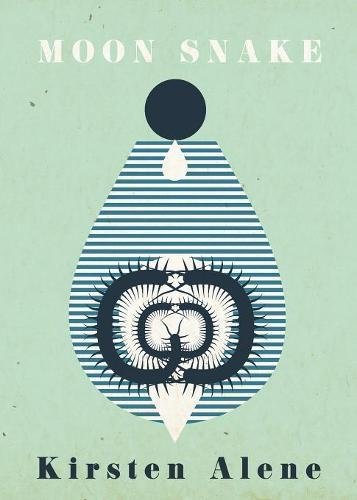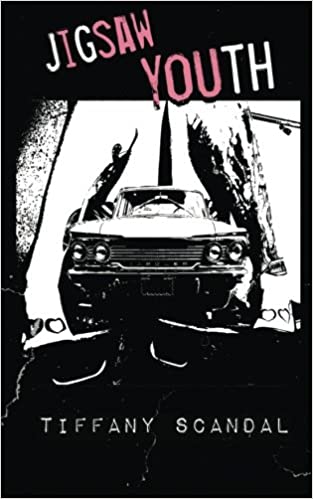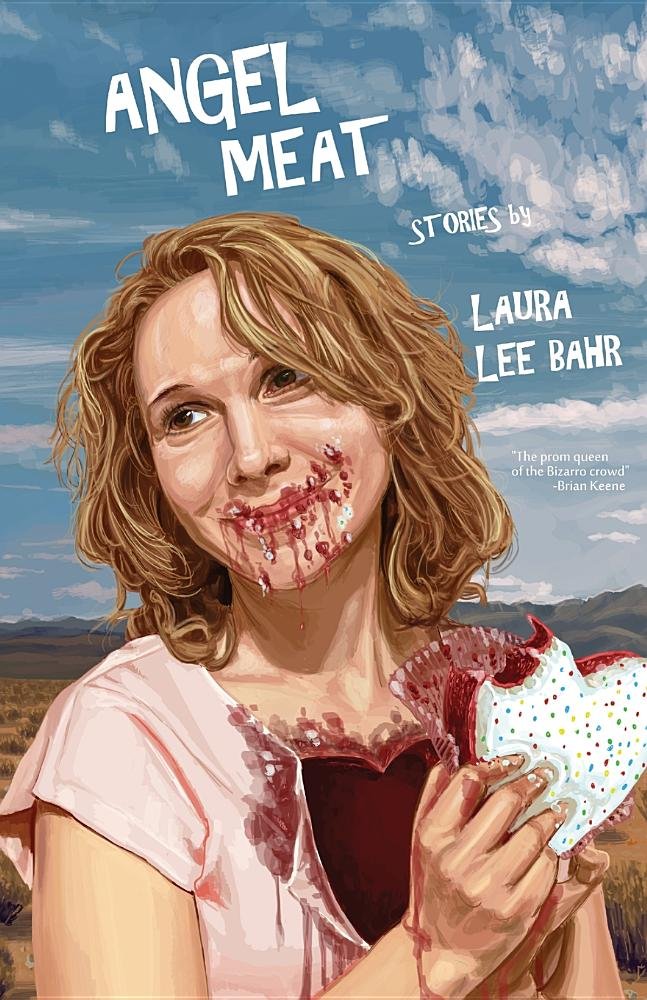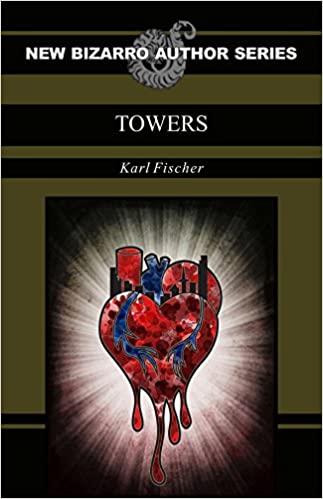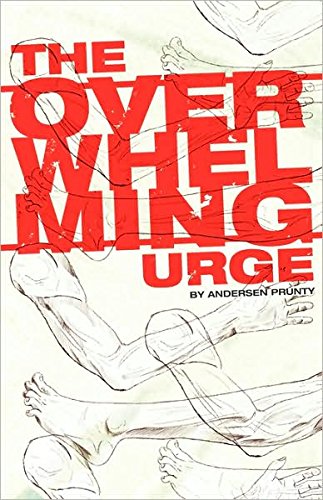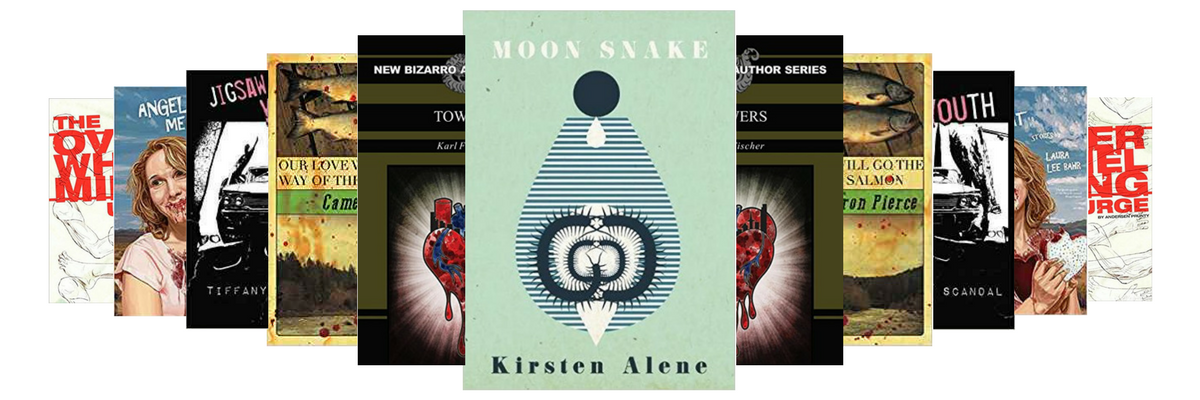
by Amber Fallon
“We are the weirdos, mister.”
– The Craft, 1996
Last year, I signed a contract with Eraserhead Press to publish my first bizarro book! As a longtime fan of a huge number of the books they’ve put out, as soon as I was given the go ahead to share the news publicly, I took to Facebook to announce my ecstatic enthusiasm over being part of their lineup.
I was understandably dismayed when I almost immediately received a private message from a dear friend, who shall remain nameless, who wasn’t quite as happy for me. The (paraphrased) conversation went something like this:
Friend: Eraserhead Press, huh? Don’t they just publish books about refrigerators and stuff that go on violent rape sprees?
Me: Um, no?
Friend: But they’re a bizarro publisher, right? Isn’t that what bizarro IS?
Now Friend is a solid person, and I love them to bits. They weren’t trying to be dicks or disparage me at all, they just legitimately thought that that was bizarro fiction: kitchen appliances coming to life and committing acts of sexual violence. I promptly took the opportunity to correct that false perception for them, and I’d like to try and correct it for you, too.
Let me say that things like that do exist within the genre, just like torture porn and extreme rape depictions exist within the horror genre. There is nothing at all wrong with that, or with the people who enjoy reading things like that (since I’m one of them, heh) but it is FAR from all there is to explore in the world of the weird, just the same way there is so much more to horror than Edward Lee’s The Bighead and Jack Ketchum’s The Girl Next Door.
Let’s start by giving the term bizarro an official definition. Here’s what Wikipedia has to say about it:
“Bizarro fiction is a contemporary literary genre, which often uses elements of absurdism, satire, and the grotesque, along with pop-surrealism and genre fiction staples, in order to create subversive, weird, and entertaining works.”
I’d be willing to bet that there are several things you already know and love that fit comfortably into that definition. Things like Rick and Morty, Adventure Time, Twin Peaks, David S. Pumpkins, and The Lobster, just to name a few. I’m sure you could think of dozens, if not hundreds, of others if you tried. These things feature elements of the absurd, the surreal, satire, the grotesque, the unusual, abstraction, and general weirdness that make them wonderful, unique, and well loved. Yet, for some unknown reason, they aren’t labeled as bizarro, and bizarro remains sort of a dirty word in a lot of circles.
The article goes on to say that “In general, Bizarro has more in common with speculative fiction genres (such as science-fiction, fantasy, and horror) than with avant-garde movements (such as Dadaism and surrealism), which readers and critics often associate it with.” Interesting. I wonder if that perception might have something to do with the stigma that’s often associated with the bizarro genre?
Speaking of that stigma, where does it come from? Where did it start? Who started it? Why? Honestly, I’m not sure. I wish I knew, so that maybe changing that perception could be made a little easier. As it is, I know that my friend’s reaction was hardly unique. The important part is that they were willing to learn more and expand their horizons. If you’ve got the same openness, let me share a list of bizarro books for beginners; things to help you get your toes wet in the genre I love so much.
Moon Snake is a pair of similar-ish novellas, which is great if you don’t want to invest a lot of time in your first taste test of the genre. While both of the stories are definitely bizarro in nature, they’re also comprised of a lyrical kind of beauty, one that transcends genre and I think would do a great job of bridging the gap. There are some scary things in here, but nothing so extreme that it would send new readers running for the hills. If you’re looking to try bizarro fiction on for size, Moon Snake by Kirsten Alene is an excellent place to start.
Jigsaw Youth is a novel, so it’s a bit meatier than the previous selection. It’s a brilliant, vivid look at the life of a woman told in remembrances and fractured glimpses at a broken past. It’s sad, it’s powerful, it’s traumatic, it’s heartbreakingly real. This is the kind of book that I would put on an Oprah-esque book club reading list.
Angel Meat is a short story collection, so it’s another great choice for someone who is looking to try on the genre for size without a big commitment. Think of it like one of those little sampler boxes you get around the holidays with different kinds of chocolate in them. There are stories in the book that range from heartbreaking modern realism to weird science fiction, to outright bizarro. It’s a great way to see a lot of different styles from one really talented individual.
Towers is quite possibly the most bizarre bizarro book on this list. The concept may be a little out there if you haven’t read bizarro before, but the book is solid. If you’re looking to bite off a bigger chunk of weird than the previous suggestions, this one is for you. It’s the story of sentient towers, reincarnated as human beings living in those towers. It’s full of heart, imagination, triumph, and a whole host of human emotions. Can there be a more classical tale than the search for a lost love? Towers takes that idea and runs with it, sprinkling in elements of horror and bizarro along the way.
The breadth of human emotion is played out in Our Love Will Go the Way of the Salmon by Cameron Pierce. Love, loss, beauty, tragedy, hope, it’s all here. There are elements of horror and, of course, bizarro, but this is another excellent book for someone wanting to become more familiar with the genre.
I’ll call this particular selection “Advanced Bizarro for Beginners.” It’s weirder and more ‘out there’ than most of the other selections on this list, but I chose it for two reasons. Number one, it’s a great book. It’s well written, with rich characters and a full gamut of emotions. Number two, it’s a great way to end the list. If you’ve read and enjoyed some of the other books here, this is a great next step for you. In kind, if you’re a more daring reader in general this might be a good book for you to get started with.
There are many reasons why I’m so passionate about bizarro fiction. I have always loved the absurd. I revel in the weird, the unique, the different. As a writer, I love the lack of constraint there. I can, and frequently do, explore literally anything, alongside some of the friendliest, funniest, most wonderful people I know, my brothers and sisters in bizarro. There is nothing quite like the sense of gleeful abandon I feel while reading through Carlton Mellick III’s latest book. If you made it through this list and enjoyed what you read (and I’m betting you did!), check him out. Carlton is pretty much the king of bizarro for a reason. His books are so weird, so incredibly different, that they provide a vivid, even somewhat disorienting, escape from reality. He has written about everything from mermaids to a magical post-apocalyptic grocery store, and done so with some serious style.
I hope I’ve inspired you to take a walk on the weird side, and I hope that if you have, you’ll join me in helping the world to embrace bizarro! Share it far and wide! Help us all erase that weird stigma that’s associated with bizarro and tell everyone that it is so much more than violent kitchen appliances come to life.

This post may contain affiliate links. Further details, including how this supports the bizarro community, may be found on our disclosure page.

